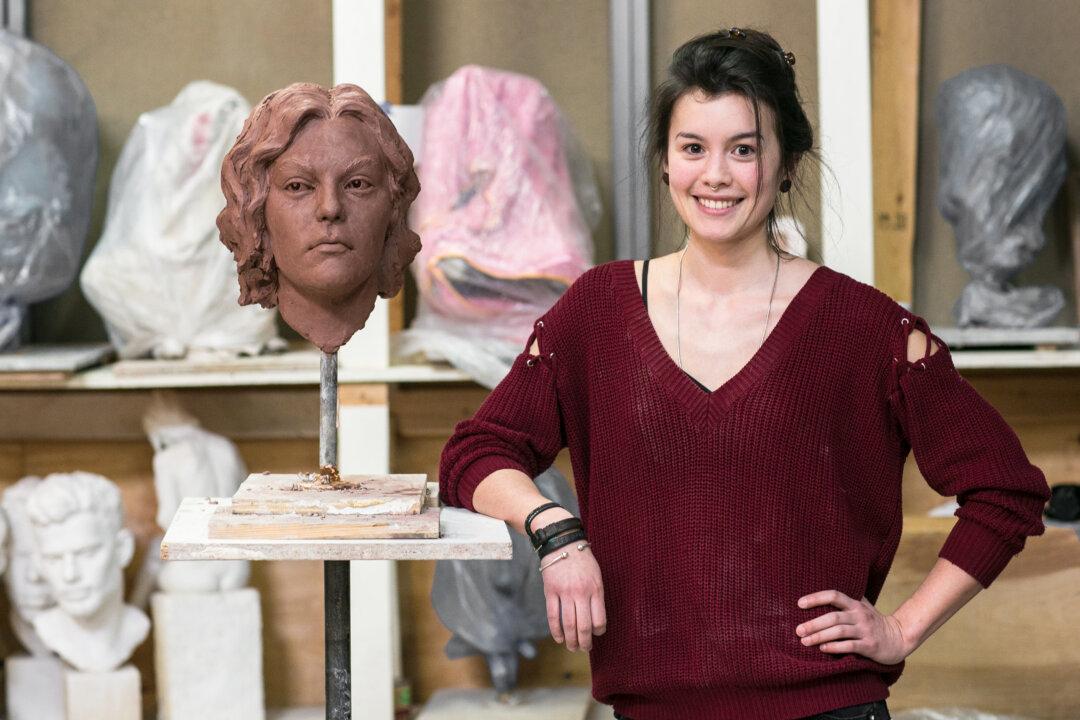NEW YORK—When we look at a work of art we immediately enter into a relationship with the artist who made it. Even centuries later we can sense the feelings that moved the artists to create those pieces. Echoing Leo Tolstoy, artists, especially artists who are sincere in evoking their selected feelings in their works, become a means of uniting people and of shaping culture in the grand scheme of things.
As a young artist who is just beginning to hone her own vision, Zoe Dufour emphasized her intention to be sincere in creating her sculptures, in showing the various emotional states and dynamics of how one being relates to another, whether between one person and another, or between people and animals. But before choosing her subject matter, Dufour starts by looking within.






